Vancouver Island in British Columbia is a special place. But most visitors tend to stick to the well-known spots on the southern end. Which is really too bad because there are so many great things to do on northern Vancouver Island. It’s actually my favourite part!
Northern Vancouver Island is off the beaten path so it feels a bit wilder: Tiny towns, lush rainforest, great hiking, camping and kayaking, and SO MUCH WILDLIFE. North Vancouver Island is the place to go if you want to see whales, bears, sea lions, porpoises, and more.
I’ve made nine trips to Northern Vancouver Island over the years, and each time I discover another incredible place. (A of the trips were research for my book, Backpacking on Vancouver Island.) I haven’t seen everything there is to see on the north end of the Island yet, but believe me… I’m trying!
In this guide, I’ll give you all my insider info on the best things to do on Northern Vancouver Island as well as where to stay and where to eat.
Hey there: Thanks so much to At the Water’s Edge Adventures, BC Ferries, and Vancouver Island North Tourism for hosting me on a trip in 2020. All the other trips were at my own expense and all opinions in this post are my own. Some of the links in this post are affiliate links, which means I earn a small commission at no extra cost to you if you make a purchase. Thanks for supporting my website! -Taryn
This is a sensitive wilderness area. Learn how to Leave No Trace to keep the wilderness wild. Make sure you are prepared by bringing the 10 Essentials. Get ready for adventure with this checklist of things to do before every hike.
Northern Vancouver Island Basics
Location
Northern Vancouver Island is located… on the north end of Vancouver Island. 😉 (Thanks Captain Obvious!)
Since most of Vancouver Island’s population is clustered around the southern tip, the definition of which part of Vancouver Island is the northern part can get pretty broad. (Some people think it’s anything north of Nanaimo which isn’t even half way up the island!)
In general, there is no dispute that anything north of the town of Campbell River is considered Northern Vancouver Island. So that’s the region I’m going to focus on in this post.
How to Get to North Vancouver Island
The easiest way to get to Northern Vancouver Island is by car. Highway 19, also known as the Island Highway, runs the length of Vancouver Island from Nanaimo in the south all the way past Campbell River to Port Hardy in the north.
If you’re coming from the mainland, you can take a BC ferry from the Vancouver area to Nanaimo, then drive north from there. The drive from Nanaimo to Port Hardy takes about 4 hours.
It’s also possible to fly to north Vancouver Island via charter flights between Vancouver and Port Hardy. You can also take a bus between Campbell River and Port Hardy.
It’s easiest to get around by car. The best place to rent a car is in Nanaimo. But you can also rent cars in Port Hardy. I use Discover Cars since it lets you compare prices from lots of different companies so you can be sure you are getting the best deal.
North Vancouver Island Weather
Northern Vancouver Island has a wet maritime climate. The area gets a LOT of rain between October and March. The driest months are July and August, but May, June, and early September can be nice too.
While it’s not a warm place, it never gets that cold either. In July and August, the average temperature is between 10 and 18C (50-64F). Between November and March, the average temperature is between 1 and 8C (34-46F).
In general, expect rain and chilly weather at any time of year. But you could also luck out. I’ve had several trips with good weather including in 2020 during my hike to Cape Scott and a kayaking trip in the Johnstone Strait where we saw temperatures up to 25C (77F)!
READ NEXT: The Best Weather Apps for Hiking
Indigenous Context
Northern Vancouver Island has been home to several indigenous groups since time immemorial and they still live here today.
The Kwakwaka’wakw have traditional territory on the entire northern end of Vancouver Island, extending into the islands of the Johnstone Strait and the adjoining mainland.
On the west coast of Vancouver Island, they share their territory with the Quatsino people.
Further south near Sayward, Kwakwaka’wakw territory overlaps with the We Wai Kai Nation, the K’omoks Nation, and the We Wai Kum Nation.
Consider supporting Indigenous-owned businesses on your trip to northern Vancouver Island. I’ve got several recommendations in this post.
North Vancouver Island Map
I made a custom google map for you that includes everything I mention in this post. Enjoy! This map is all you’ll need if you plan to stick to the paved roads and major towns.
However, if you are venturing off onto any of the gravel roads, I highly recommend you bring a copy of the Vancouver Island BC Backroad Map Book so you don’t get lost. (There’s no cell service outside of the towns.) I also love the offline version of the Gaia GPS app for navigating backroads and hiking trails.
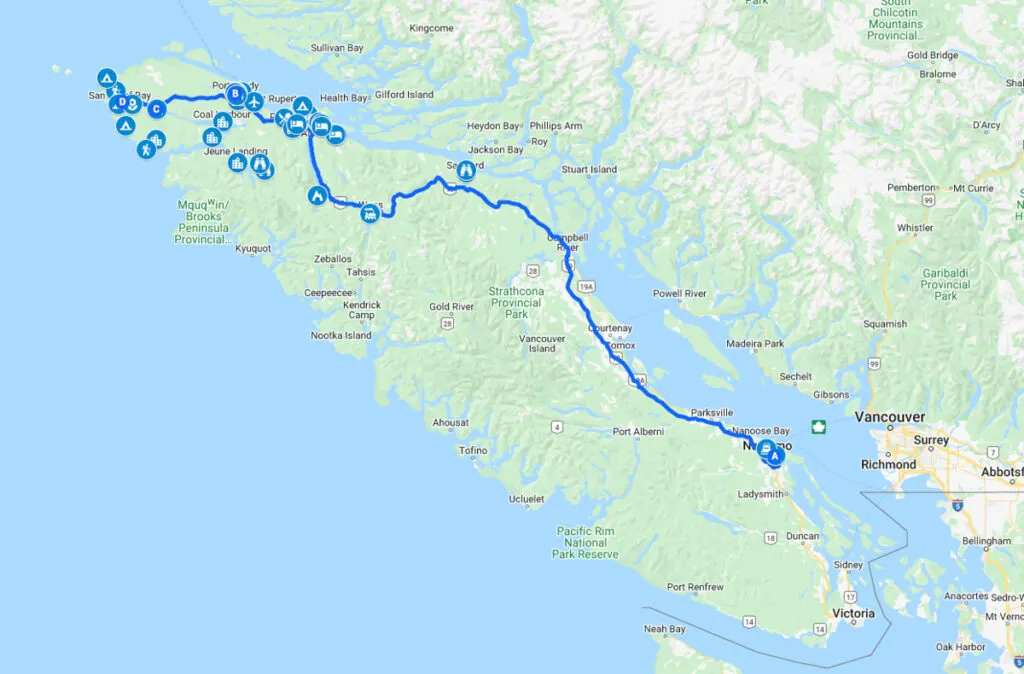
Things to do on Northern Vancouver Island
Northern Vancouver Island is a huge area, with lots of things to do. My list of things to do in North Vancouver Island is set out in geographic order, from south to north, in the order you could visit them if you were driving up the Island Highway from Campbell River towards Port Hardy.
Visit Sayward and Kelsey Bay
The tiny logging-oriented village of Sayward has been around since the 1890s. Originally only accessed by boat, today it is connected by road to the Island Highway.
Drive the short spur road into town to visit the Cable Cookhouse, a local cafe that is completely wrapped in steel logging cables. Continue through town to the port of Kelsey Bay. The wharf here is a popular place to fish or to just enjoy the view across the Johnstone Strait.

Learn About Logging Railways in Woss
Woss is another tiny logging town just off the Island Highway. It has the unique distinction of being home to the last operating logging railway in North America.
After a tragic accident in 2017, the railway finally closed after 100 years of operation. Today, you can drive into town to visit historic Steam Locomotive 113. A nearby pavilion has interpretive panels where you can learn about the history of railway logging.
There is currently talk of turning the 90 km-long railway into a biking and hiking trail, which would be amazing as it cuts through some real wilderness.
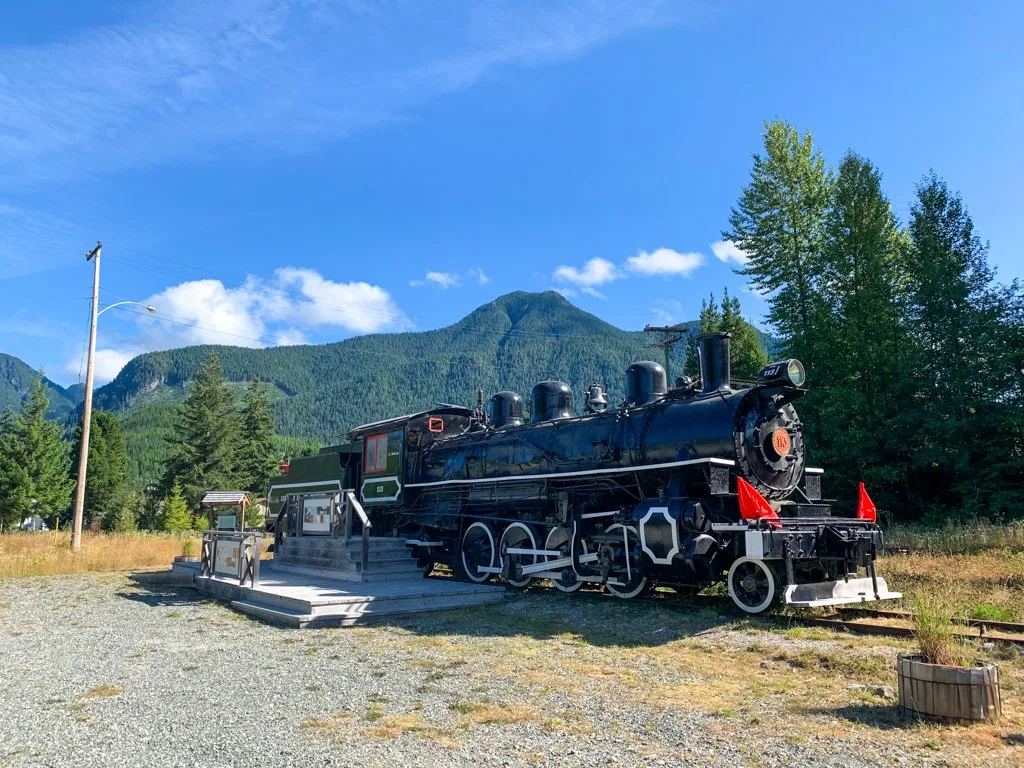
Little Huson Caves
Despite being just 20 minutes from highway 19, it took me several visits to north Vancouver Island before I made it to Little Huson Caves. In fact, I didn’t even know they existed until a few years ago. There are tons of caves on Vancouver Island, but this is one of the easiest to visit.
Atluck Creek runs through an area of limestone that is easily eroded. That means that here the creek runs right through a huge cave! Take a short walk down a hill (with some stairs) to two different viewing platforms, one at the creek entrance to the cave, the other at the exit!
READ NEXT: Little Huson Caves Hiking Guide
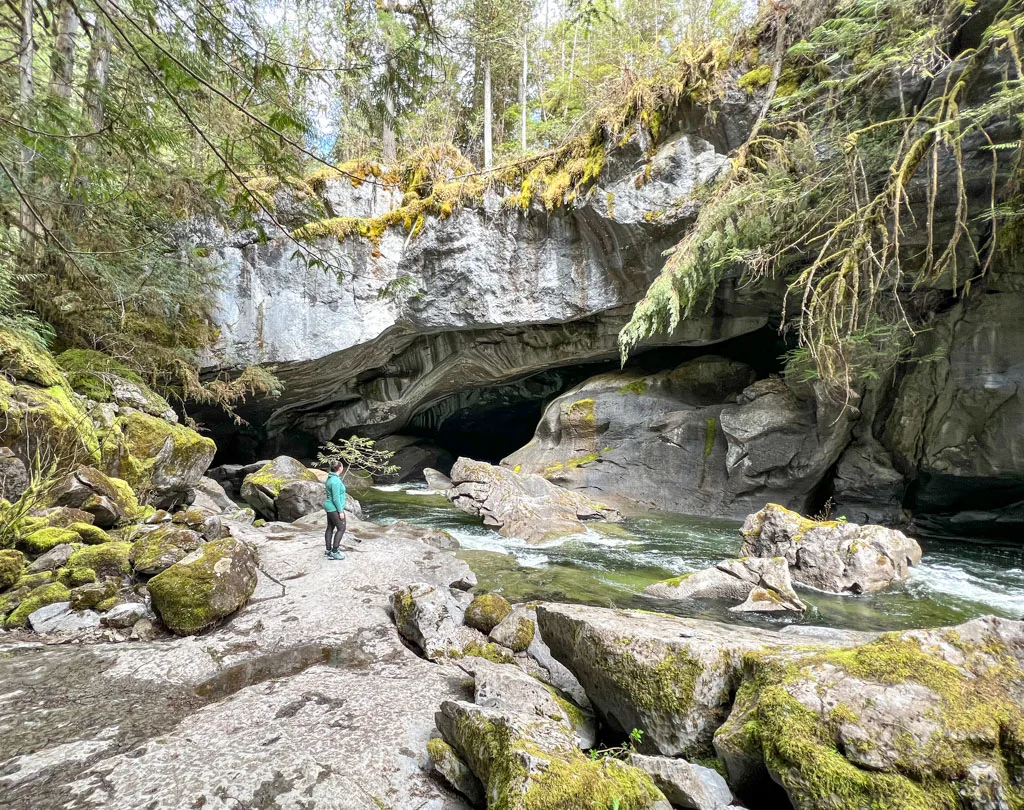
Stroll the Boardwalk at Telegraph Cove
Telegraph Cove used to be the northern end of a telegraph line that stretched the length of Vancouver Island. It slowly changed from a telegraph station, into a fishing and cannery village, and today it is an eco-tourism hub. It’s definitely worth the detour off the highway – it’s really cute!
Stroll the wooden boardwalk past historic buildings to the Whale Museum or grab a drink at the cafe and soak up the views. Telegraph Cove is also a popular launching spot for fishing boats, whale watching, and kayaking tours.
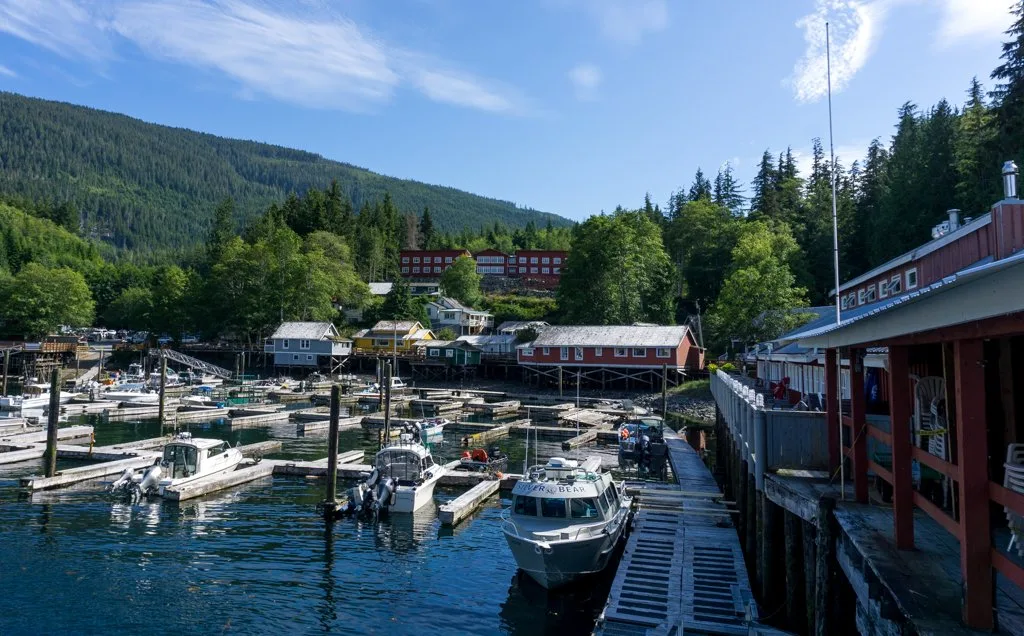
Kayak with Whales in the Johnstone Strait
The Johnstone Strait off the coast of northern Vancouver Island is one of the best places in the world to see whales. Humpback whales migrate through all summer long and the area has a high concentration of orcas (killer whales). And one of the best ways to see whales is from a kayak.
I went on a life-changing kayaking trip in the Johnstone Strait in 2020. We saw whales every day, visited Indigenous sites, saw tons of sea lions, seals, porpoises, and eagles, and visited some remote (and gorgeous) islands.
The most popular place to launch kayaks is from Telegraph Cove. You can rent kayaks or go on guided tours that last anywhere from an afternoon to a week.
I went with At the Water’s Edge Adventures who launch from a private beach next to Telegraph Cove. They are offering my readers 10% off any trip with them – just use code HAPPIESTOUTDOORS.
READ NEXT: My guide to Kayaking in the Johnstone Strait
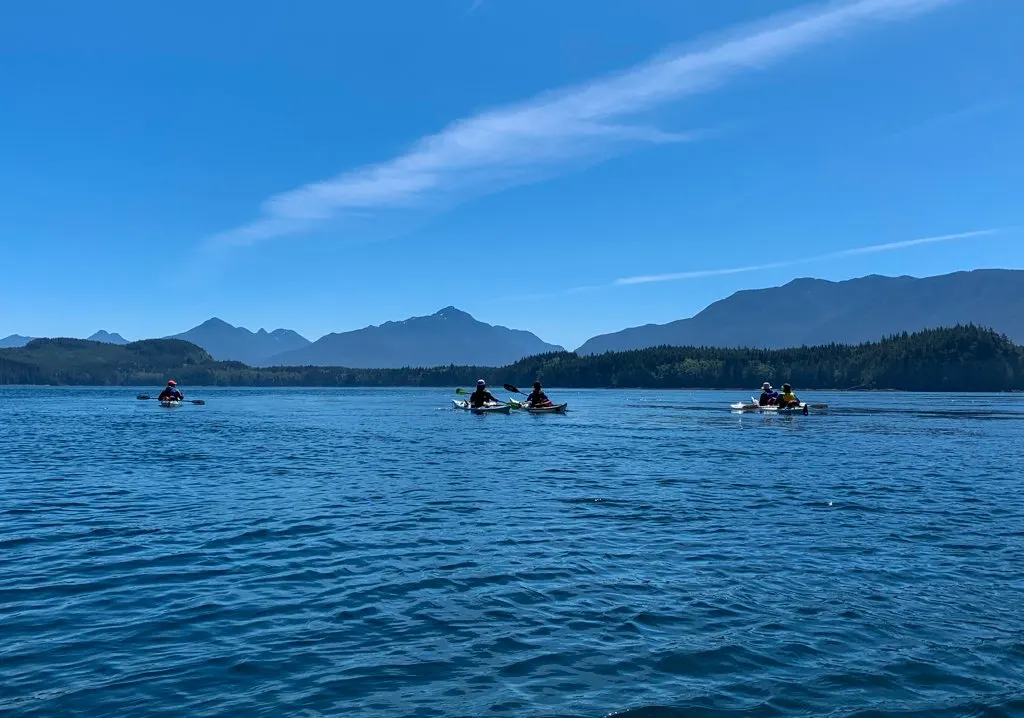
Visit Port McNeill
Port McNeill is the second largest town on Northern Vancouver Island. It’s a compact little town with shops, restaurants, and hotels. Wander along the seawall downtown for great views of the harbour.
Don’t miss the world’s largest burl at the east end of town. (Fun fact: Port McNeill is also home to another giant burl. It was the world’s largest burl until the current one was discovered in 2005. You can find the runner-up burl about 5 minutes east of town just off Highway 19.)
Take a Grizzly Bear Watching Tour
Taking a boat-based bear watching tour up Knight Inlet was definitely one of the best things to do on Northern Vancouver Island. While Northern Vancouver Island has roads and settlements, the nearby mainland has only a few boat-in villages. The huge expanse of wilderness supports a healthy population of grizzly bears.
We watched a mother grizzly bear and her two nearly full-grown cubs explore the coastline in search of mussels and other food. Later, we switched to a smaller boat to cruise up a river estuary and spy on a huge male grizzly eating grass.
I did my tour with Sea Wolf Adventures, based in Port McNeill. They are a local indigenous-run company. Our guides (Sherry and Karissa) were knowledgeable and worked hard to make sure the boat was always in position to take the best photos. The food was great too!
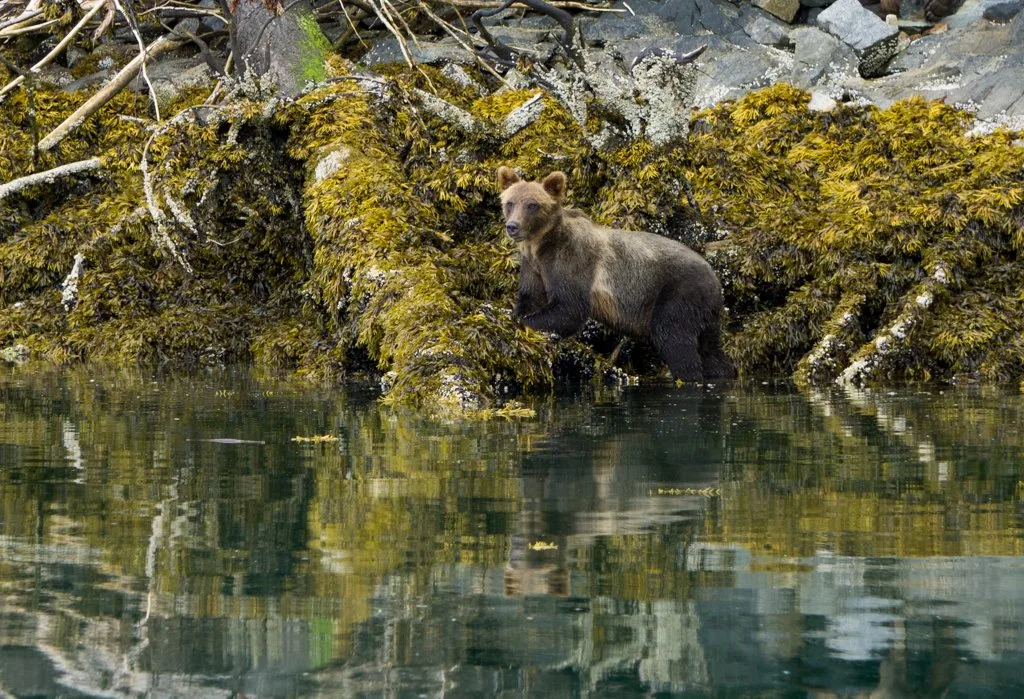

Go Whale Watching
With humpbacks migrating through every summer and a large resident orca (killer whale) population, northern Vancouver Island is one of the best places to see whales in BC.
Since I have been kayaking with whales and saw quite a few whales on my bear watching tour with Sea Wolf, I haven’t actually been on a whale watching tour on northern Vancouver Island.
But locals recommend Mackay Whale Watching out of Port McNeill. They are a small family-run company and have been running whale watching tours in the area for four decades.
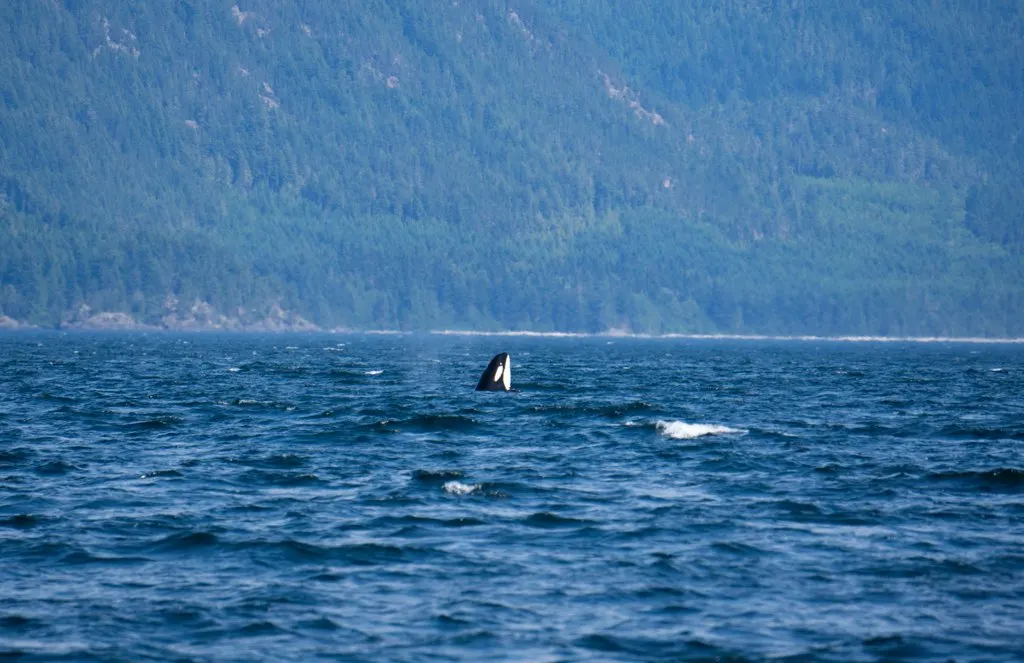
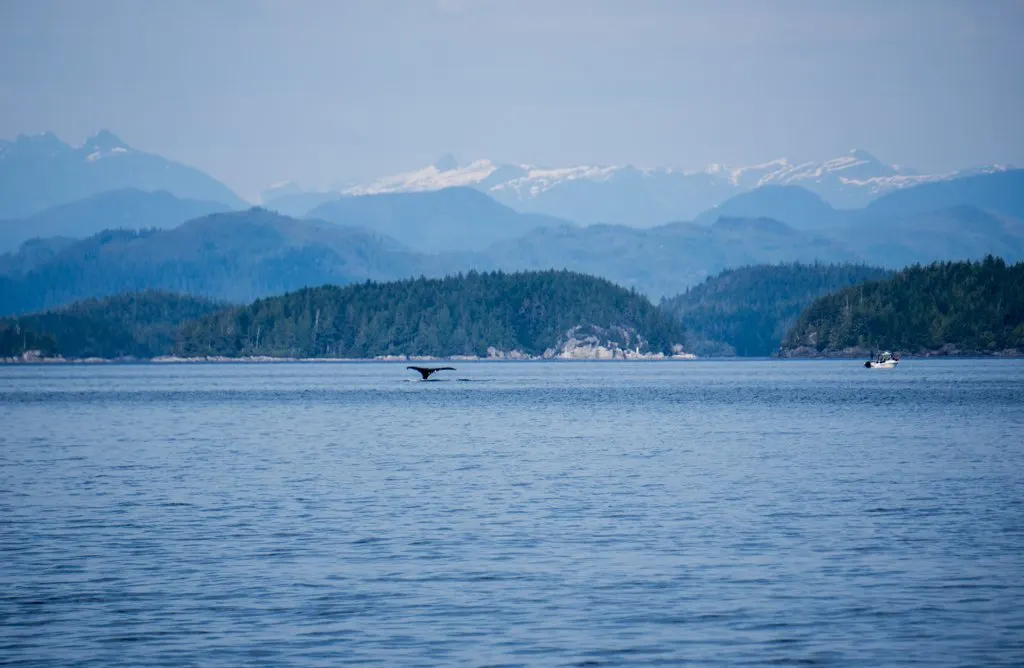
Ride the Eco-Conscious Island Aurora Ferry
BC Ferries runs the Island Aurora from Port McNeill to the nearby island communities of Alert Bay and Sointula on Malcolm Island. While the towns are definitely worth visiting (and info about them is below), the ferry ride alone is pretty fun.
This brand-new ferry was added to the BC Ferries fleet in 2020. It’s part of a move towards eco-consciousness and uses a hybrid engine. (It runs 20% on battery power, the remainder on diesel.)
Eventually, BC Ferries hopes to introduce a shore-based charging system so that the Island Aurora can run entirely on battery power. The hybrid system is much quieter than conventional engines, which is great for both passengers and the resident whales.
The views of Johnstone Strait from the ferry are spectacular, and with fairly low rates for both walk-on passengers and cars, it’s the cheapest way to get out on the water on northern Vancouver Island!
Pro tip: Take a day trip to both Alert Bay and Sointula on the same day using just one ticket to save money. You will need to take the ferry back to Port McNeill to switch between the two communities – just tell ferry staff you want to visit both.
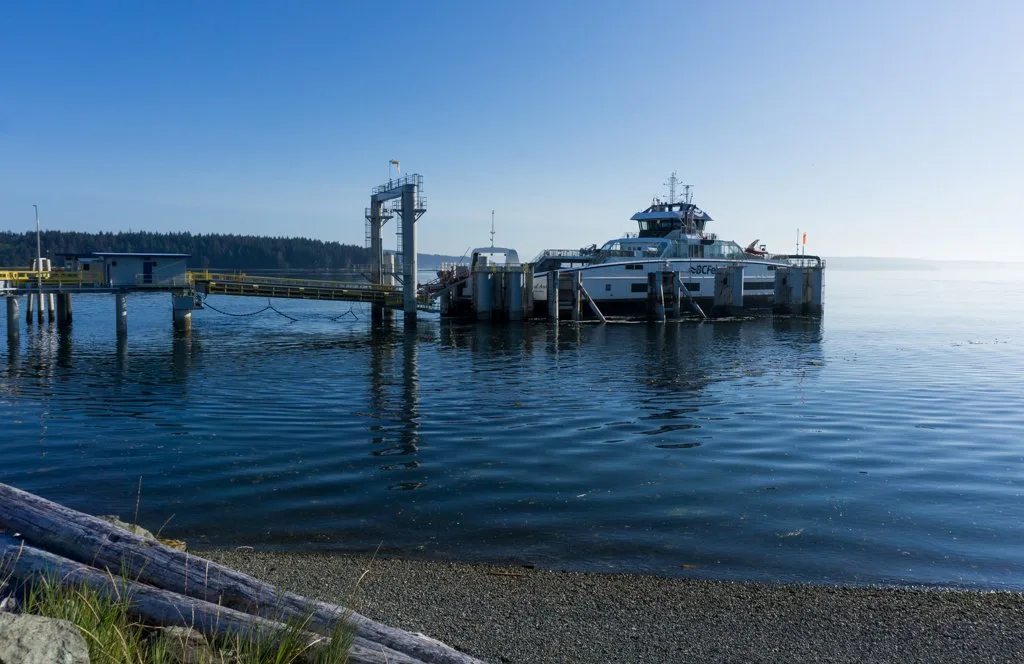
Experience Indigenous Culture in Alert Bay
Alert Bay is a small community on Cormorant Island, just a short ferry ride from Port McNeill. About half of the island is a ‘Namgis First Nation reserve. The ‘Namgis are part of the larger Kwakwaka’wakw Nation. This is one of the best places to experience Indigenous culture in Canada.
I highly recommend a visit to the U’mista Cultural Centre to learn about their history and culture. This fabulous museum has a huge collection of traditional Kwakwaka’wakw dance masks and memorabilia used in cultural events like potlatches.
In the 1920s, potlaches were declared illegal and the government stole these ceremonial objects and gave them to museums around the world. The Kwakwaka’wakw have worked hard to bring these important cultural treasures back to their traditional territory and display them on their own terms.
Alert Bay is also home to a forest of totem poles with over 30 poles spread around town. The world’s largest totem pole, at 173 feet tall (53m) also towers over the island.
If you want to go for a walk, the Alert Bay Ecological Park is a great option. Well-marked flat trails and boardwalks lead through an upland marsh fed by underground springs. It’s a great place for birdwatching.
You can also walk around the town and explore the historical buildings.
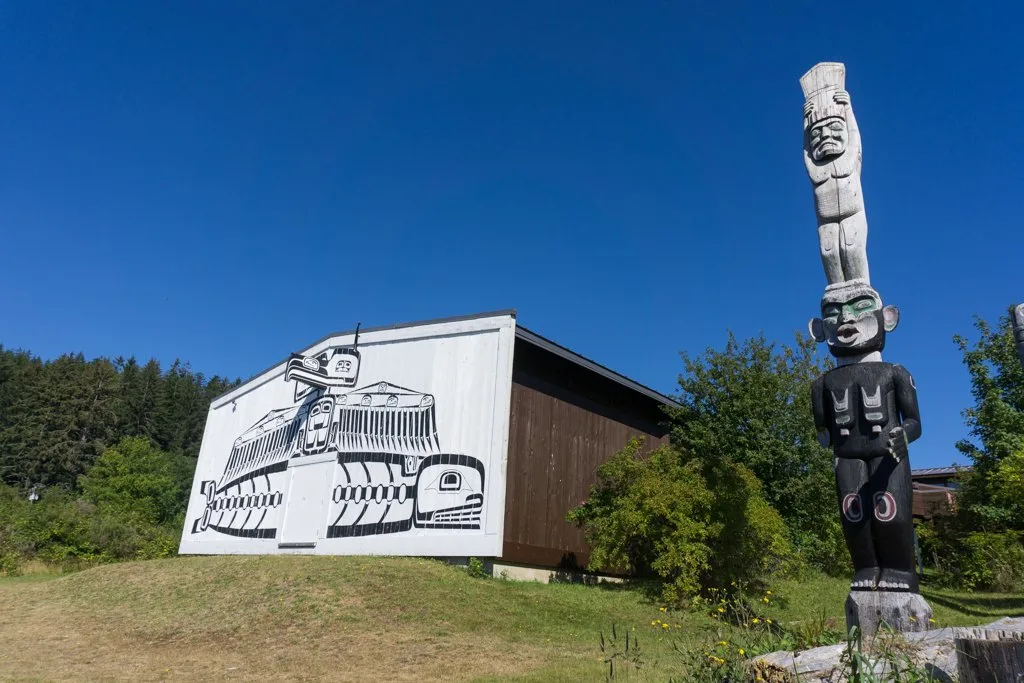
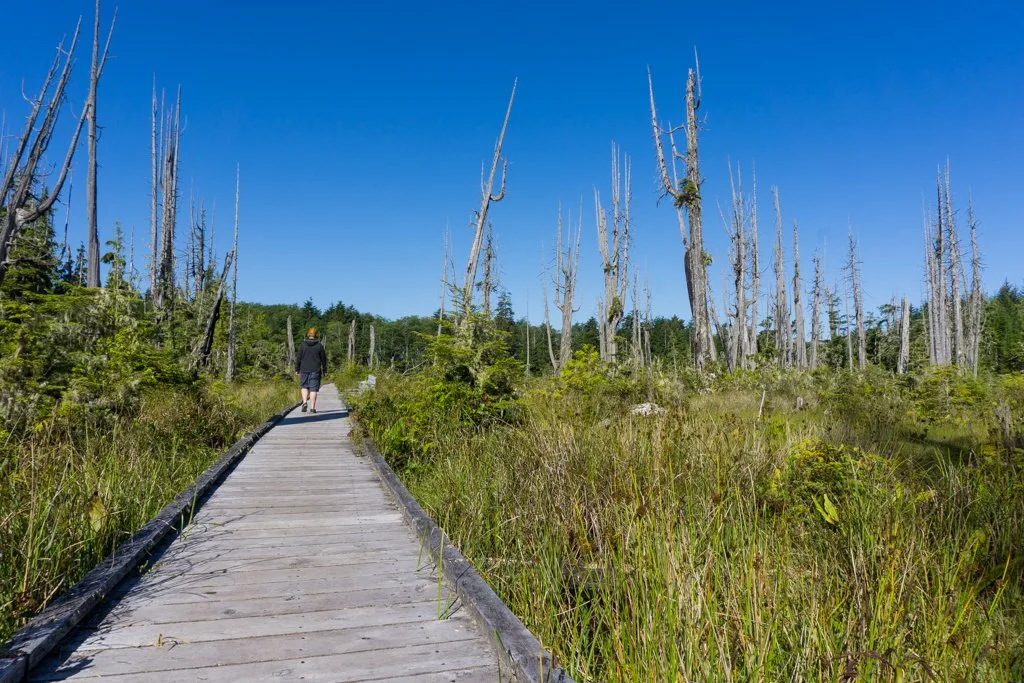
Visit Sointula and Malcolm Island
The village of Sointula on Malcolm Island has an interesting history. Finnish settlers founded the town in 1901 as a utopian collective society. In Finnish, Sointula means “place of harmony”.
Even though it is just across the water from Port McNeill, it has retained a lot of its unique character. Many older residents still speak Finnish and the cooperatively-run local store, the Sointula Coop, has been open for over 100 years. You can learn more about local history at the tiny Sointula Museum.
Today, the island is home to lots of artists and is a great place for hiking and biking.
If you have time, be sure to make the short drive out to Bere Point. The pebble beach there is a favourite spot for resident orcas to rub their bellies at high tide. A citizen science orca research team sets up tents near the viewpoint each year. Stop in to ask them about the most recent whale sightings.

Drive the Alice Lake Loop
If you are up for some backroads driving, take on the Alice Lake Loop. I haven’t had time for the 2.5-hour trip yet, but it’s high on my list. This mini-road trip visits some of northern Vancouver Island’s unique karst features, formed by centuries of water eroding rock.
Highlights include the Devil’s Bath, a water-filled sinkhole that connects to a river underground, and the Eternal Fountain, a waterfall that appears out of the side of a cliff, then disappears beneath your feet. Take a break in the town of Port Alice part-way along to have lunch and stroll along the ocean-front seawalk.
Visit Port Hardy
Port Hardy is the largest town on north Vancouver Island, its economic centre, and the jumping-off point for ferries to northern BC. It’s a good place to grab a meal, buy groceries, or shop for souvenirs.
Don’t miss the Book Nook and Drift, which share space with Cafe Guido on Market Street. Drift has really cute locally-made clothing and home goods and the Book Nook has a great selection of local books.
For the easiest eagle spotting around, go for a walk along the seawall. The resident eagles are sure to be flying overhead, foraging on the beach at low-tide, or calling out from their nests in the nearby treetops.
Although I haven’t had time to visit, I’ve also heard that the museum at the Quatse Salmon Stewardship Centre is great for rainy days, especially if you take a tour of the hatchery.
Another thing that’s on my list is visiting the nearby Kwagu’ł Nation community of Tsaxis (Fort Rupert) to visit Calvin Hunt‘s gallery of traditional Kwakwaka’wakw carvings.
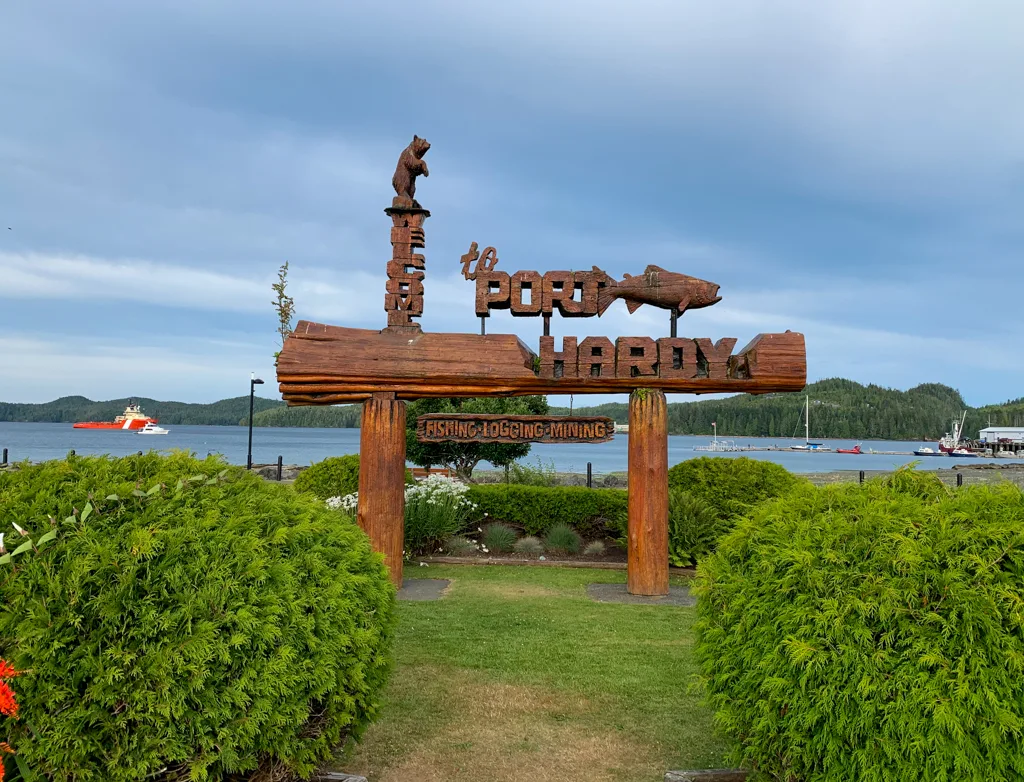
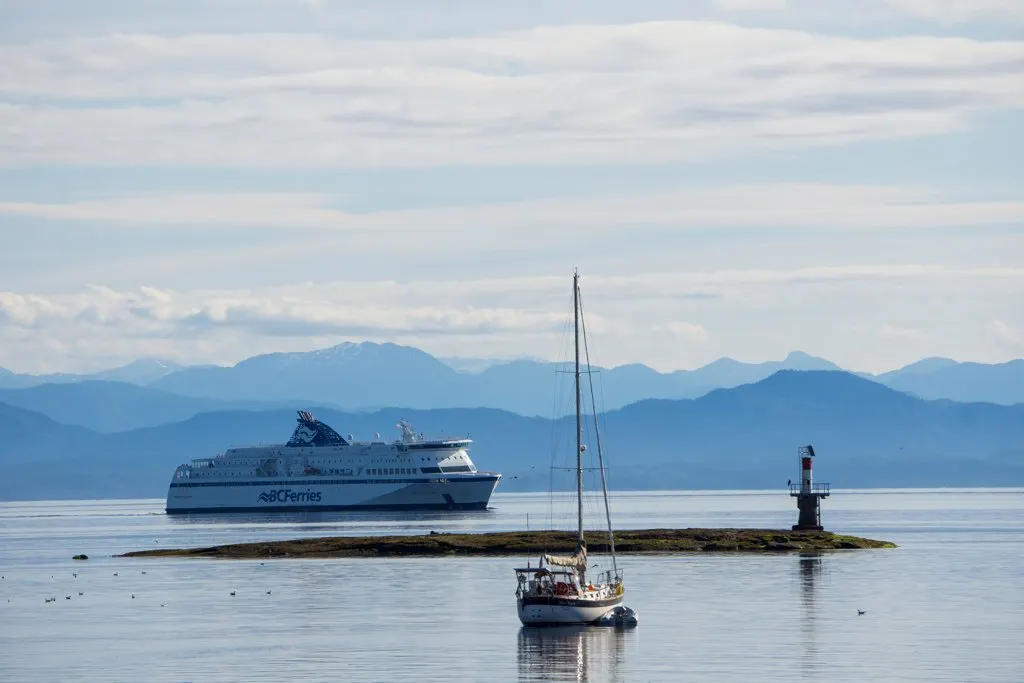
Take the Inside Passage Ferry to Northern BC
Port Hardy is the departure point for the Inside Passage ferry to Northern BC. This epic all-day ferry cruises up the coast to Prince Rupert. Along the way, it passes spectacular scenery including picturesque islands, towering mountains, narrow inlets and tons of whales. On my trip we saw the best rainbows.
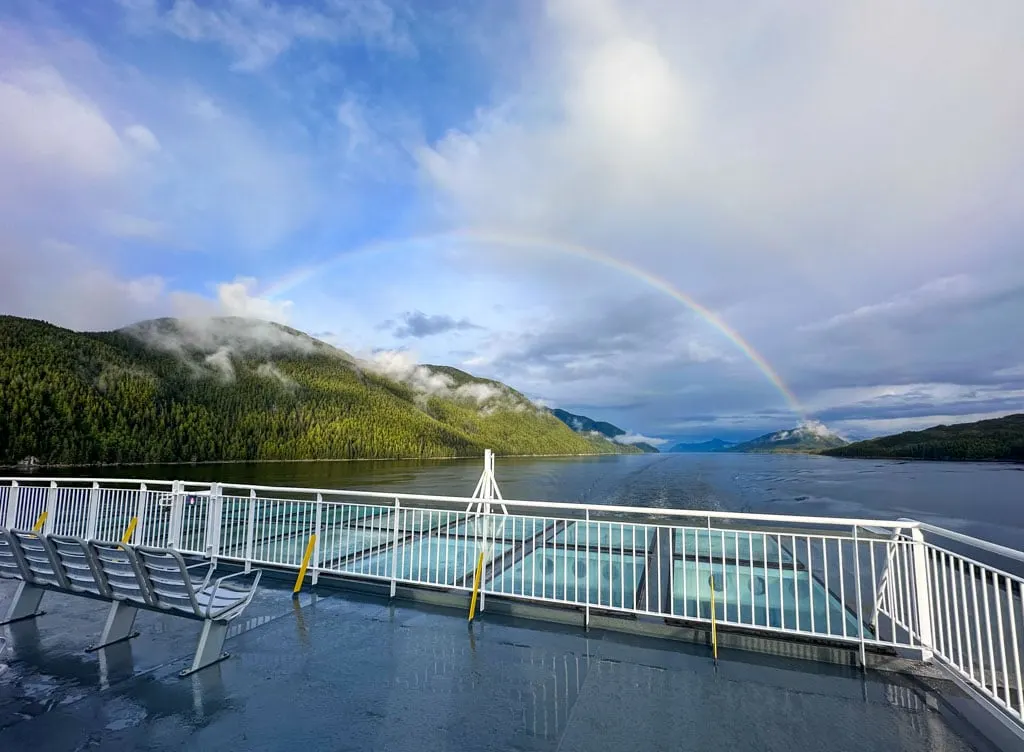
READ NEXT: Inside Passage Ferry from Port Hardy to Prince Rupert, BC
Get Off the Beaten Path on Gravel Roads
If you venture off the paved Island Highway, you’ll be heading further off the beaten path than most tourists who visit north Vancouver Island. The remote communities of Coal Harbour, Winter Harbour, Quatsino, and Holberg are small resource-based towns, focused on fishing and forestry with a growing community of summer residents.
But if you are into nature, the surrounding areas are worth investigating too. You’ll find remote beaches, deserted campgrounds, hiking trails, and incredible fishing.
Use the Vancouver Island North Recreation map to get ideas on where to go. You can drive sometimes rough gravel roads to Coal Harbour, Winter Harbour, and Holberg, but you’ll need a boat to get to Quatsino.
If you make the drive, bring a map or use the Gaia GPS app since there is no cell service. Pack a spare tire, and be prepared to pull over for speeding logging trucks. Most roads go through the town of Holberg. If it’s open, be sure to stop at the Scarlet Ibis. It’s Vancouver Island’s most remote pub.
Visit Winter Harbour
Winter Harbour is a tiny town that has been around since the 1890s. It began as a fishing village but diversified to become a logging town as well by the 1950s. When the logging operation shut down in 2017, the town’s population dropped to just two year-round residents.
However, in the summer the old loggers shacks fill up with vacationers going salmon fishing or exploring the labrynith of inlets. Be sure to stop at the Outpost General Store, then walk the unique waterfront boardwalk which connects homes and businesses along the inlet and predates the road network.
If you’re up for adventure, drive the backroads to hike to Grant Bay. The short trail leads to what I think is one of the most beautiful remote sandy beaches on Northern Vancouver Island. To get there, take West Main from Winter Harbour Road, then follow it to its end.
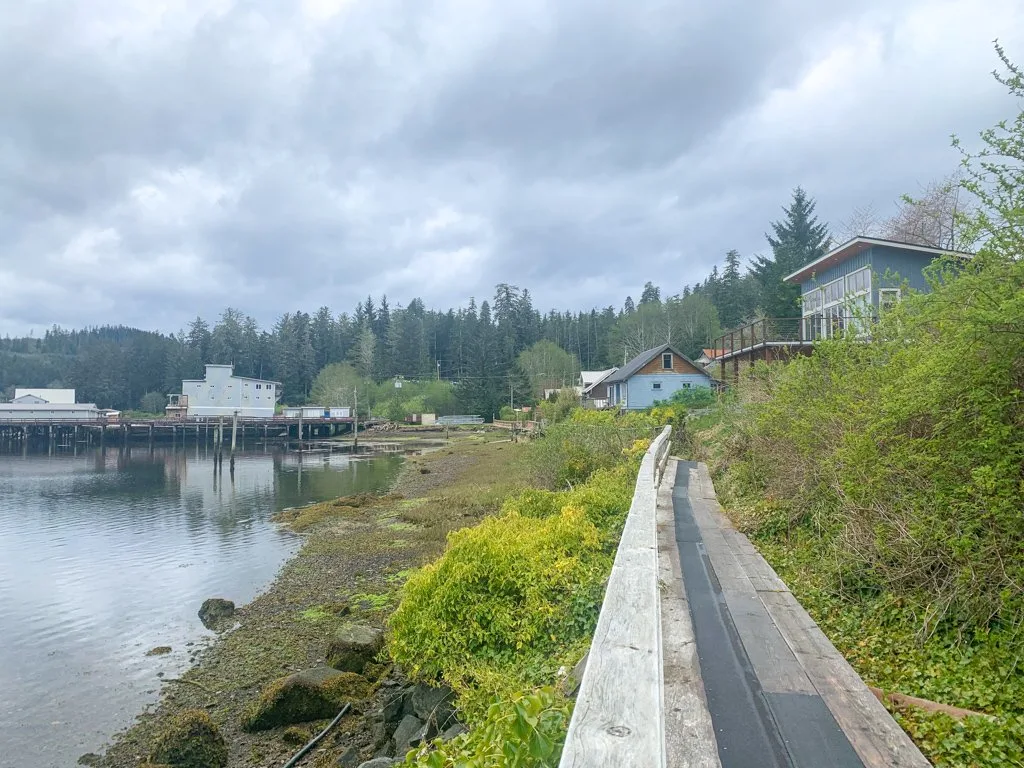
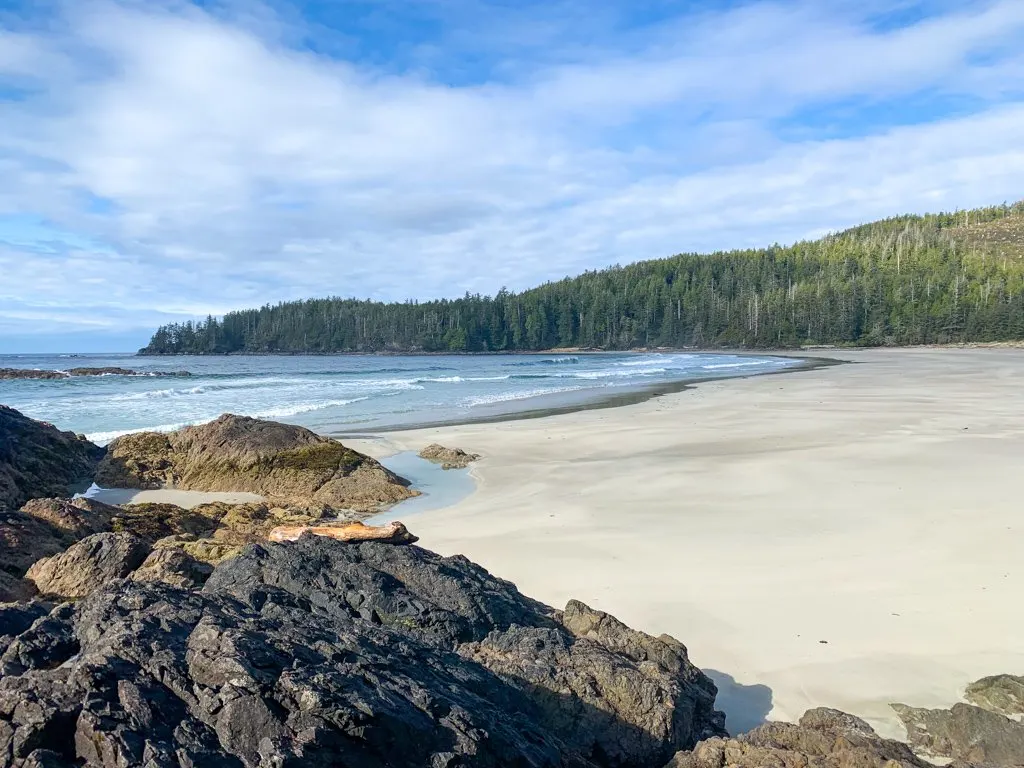
Hike, Canoe, Camp, and Surf at Raft Cove Provincial Park
Remote Raft Cove Provincial Park is located on the wild west coast of Northern Vancouver Island. There are two ways to get there, but both start with a long drive on logging roads.
You can canoe 5 km down the Macjack River to its mouth from a put-in off Topknot Main FSR accessed from Winter Harbour. Or you can make a tough and muddy 3 km hike to the beach from a trailhead on Ronning Main FSR access from Holberg.
Once you arrive, the sand stretches for a kilometres and waves pound in from the Pacific Ocean. It’s a popular spot for surfers. There is a great backcountry campground on the peninsula at the mouth of the Macjack River.
Get more info on visiting Raft Cove in my book, Backpacking on Vancouver Island.

Visit Ronnings Garden
Ronning’s Garden is one of the most unique places to visit on Northern Vancouver Island. Norwegian settler Bernt Ronning built a homestead on the wagon road between Holberg and Cape Scott around 1910. He cleared the bush to create an impressive garden that spanned nearly 5 acres.
He died in 1963 and the rainforest started to reclaim the garden. But in the last few decades new owners have worked on restoring the garden. Today you can walk into the garden to see huge monkey puzzle trees and many other interesting plants from around the world.
Find Ronnings Garden just off San Josef Main on the way to Cape Scott Provincial Park.

Hike and Camp at Cape Scott Provincial Park
Cape Scott Provincial Park sits at the northern tip of Vancouver Island. It’s a wild and beautiful place of white sand beaches, dense rainforest, incredible wildlife, and settler history.
The only way to explore the park is by day hiking or backpacking in to one of the remote backcountry campgrounds. The park has three main trails: the easy and flat day-hike to San Josef Bay, the moderate 3-day backpacking trip to Cape Scott Lighthouse, and the challenging 6-day North Coast Trail. Cape Scott is one of my favourite places and I’ve hiked into the park six times.
Get more info on visiting Cape Scott Provincial Park in my book, Backpacking on Vancouver Island.
Get My Book…
Backpacking on Vancouver Island
Discover Vancouver Island’s best day hikes and overnight trips
- 25 backpacking trips and 10 day hikes throughout Vancouver Island
- Info about permits, reservations and campground facilities
- Detailed maps and photos
- Advice for extending your trip
- Points of cultural and natural history
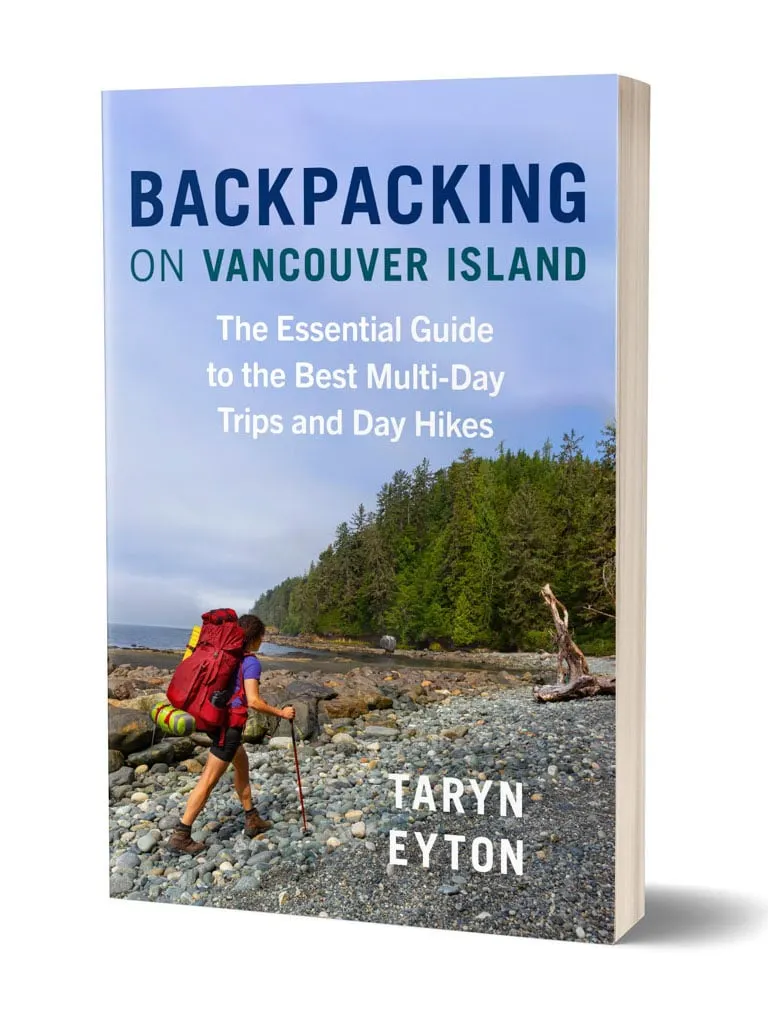
READ NEXT: Cape Scott Trail Guide
READ NEXT: North Coast Trail Guide
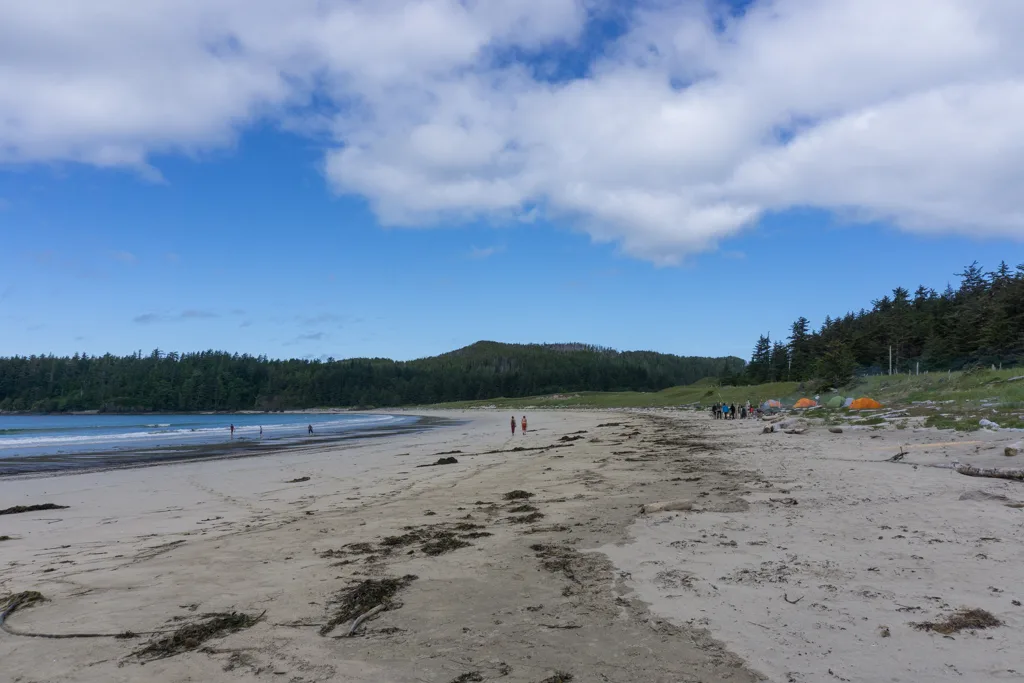
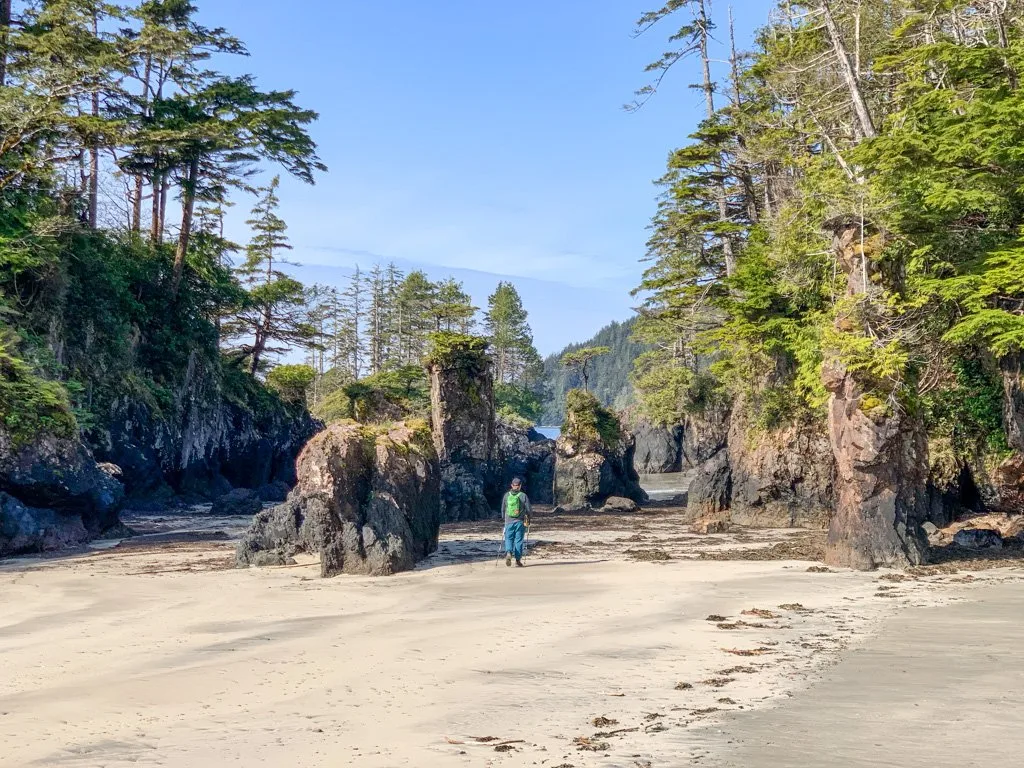
Where to Eat on North Vancouver Island
Since many of the communities on northern Vancouver Island are small, you may have to do a bit of advance planning when it comes to where to eat. Most of the towns have at least one restaurant, pub, cafe, or general store but a few do not.
There are also a few restaurants that are worth planning for. Here are my picks for the best restaurants on north Vancouver Island.
Cafe Guido
This adorable hipster coffee shop in Port Hardy wouldn’t be out of place in a big city. Cafe Guido has sandwiches, baked goods, and of course coffee. They share space with the Book Nook and Drift, so allow time for browsing.
Duchess’ Bannock and Desserts
If you’re in Alert Bay, don’t miss trying Duchess’ Bannock. If you’ve never had bannock before, it’s a traditional indigenous fried bread. Duchess’ bannock was some of the best I have ever tasted.
If you have a sweet tooth, order the bannock and berries instead of just the plain bannock. It comes covered in three kinds of berries, berry sauce, whipped cream, chocolate sauce, and sprinkles. Sooo good. (Just make sure you share it with someone – it’s huge!)
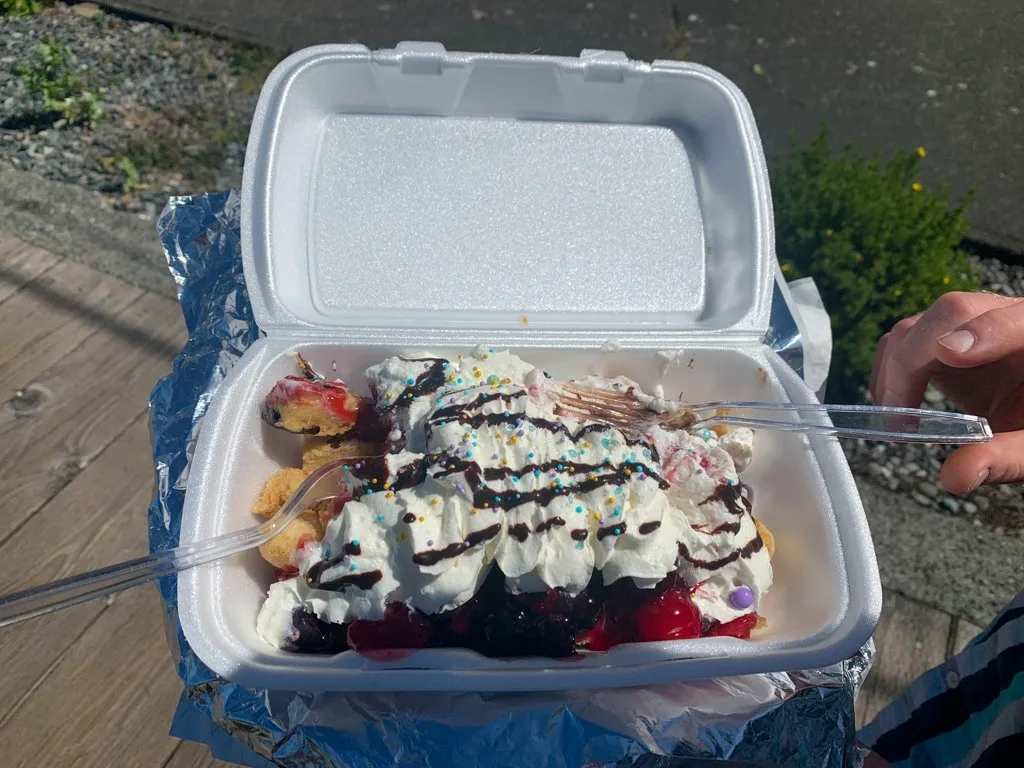
ha’me’ Restaurant and nax’id’ Pub
The ha’me’ Restaurant and nax’id’ pub at the newly refurbished Kwa’lilas Hotel in Port Hardy serve local, Indigenous-inspired west coast cuisine. (Fun fact: in Kwakwaka’wakw, ha’me‘ means food and nax’id’ means drink.)
We’ve eaten there a few times. My husband was really impressed with their salmon burger… which was served on bannock.
Where to Stay on North Vancouver Island
With campgrounds, B&Bs, and lodges scattered across northern Vancouver Island, it’s easy to find a place to stay. Here are a few of my favourites:
Bere Point Campground, Malcolm Island
I haven’t actually camped here, but it’s high on my list after visiting for the day in 2020. Located next to the famous whale rubbing beach on Malcolm Island, it has incredible campsites, many of which are right on the ocean. On my visit, campers were trading stories of their many whale sightings! Book in advance as it is popular.
Telegraph Cove Resort, Telegraph Cove
We stayed in the Telegraph Cove Lodge building at the Telegraph Cove Resort before our Johnstone Strait kayaking trip. It has great views of the cove. You can also stay in their collection of historic homes right on the boardwalk – they are super cute! Check prices.
Kwa’lilas Hotel, Port Hardy
I spent three nights at the Indigenous-run Kwa’lilas Hotel in Port Hardy on my 2020 visit to northern Vancouver Island. It’s completely renovated with gorgeous First Nations art in every room. Definitely one of the more upscale places to stay on northern Vancouver Island (without being expensive or pretentious). Check prices.
The Quarterdeck Inn, Port Hardy
We stayed at harbour-front Quarterdeck Inn in Port Hardy in 2021. It has comfortable rooms and is right on the water. It’s the best place to stay if you are hiking the North Coast Trail since it is right next to the water taxi dock. (We stayed here the night before our 2021 NCT hike.) Check prices.
Nimpkish Hotel, Alert Bay
This boutique hotel stands out along the waterfront in Alert Bay. The Nimpkish Hotel is a bright blue historic building with a big deck and lots of windows for great views of the Alert Bay Harbour. With only nine rooms and breakfast included, you’ll feel like you’re staying at a B&B, not a hotel. Check prices.
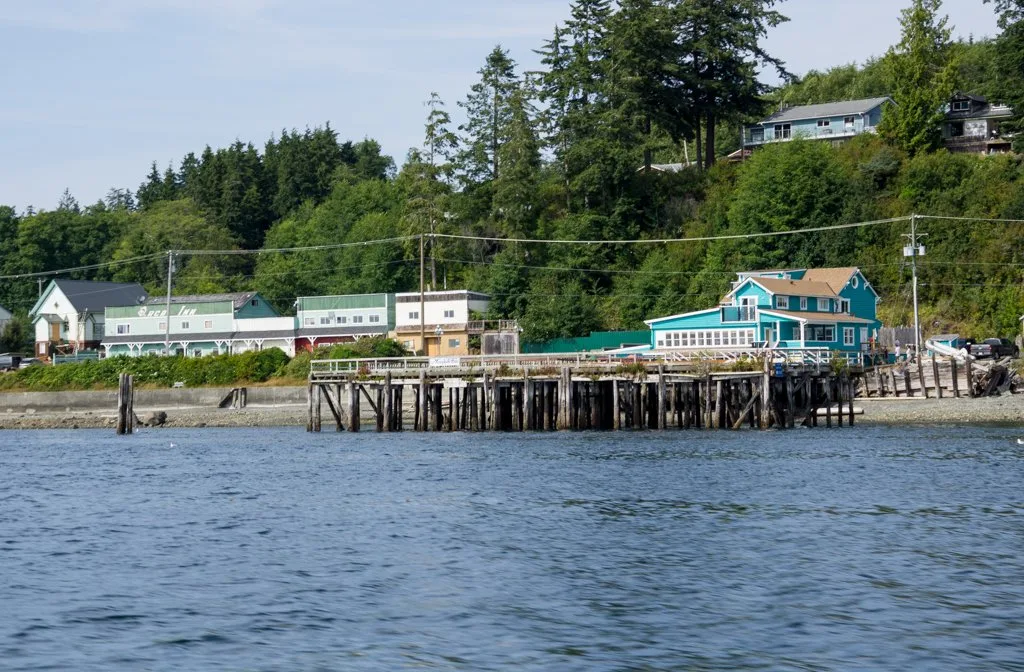
Humpback Inn, Port McNeill
The Humpback Inn in Port McNeill is a newly refurbished motel with a cute retro vibe. It’s right by the water and an easy walk to everything including whale and bear watching tours. Friends stayed her and loved it. Check prices.
Cape Scott Provincial Park
If you want to get away from it all, you can’t beat a hike-in campsite at Cape Scott Provincial Park. The sea stacks at San Josef Bay are great if you want a short hike, but for the real experience, make the full-day trek out to Nel’s Bight for the full white sand beach experience. The best part: no reservations required! (Read my guide to Cape Scott to plan your trip.)
Now you have all the info you need to head to northern Vancouver Island. What is your favourite thing to do on north Vancouver Island? Tell me in the comments. And as always, send me your questions as I’m happy to help answer them.
More Things to do on Vancouver Island
- Little Huson Caves on Vancouver Island
- Kayaking in the Johnstone Strait: Everything You Need to Know
- The Ultimate Guide to the Pacific Marine Circle Route on Vancouver Island
- How to Visit Avatar Grove, Big Lonely Doug and Other Big Trees on Vancouver Island
Hiking Guides for Vancouver Island
- North Coast Trail Guide: Backpacking on Vancouver Island
- Cape Scott Trail Guide: Hiking and Camping on Northern Vancouver Island
- Your Guide to the West Coast Trail in British Columbia
- Wild Side Trail: Hiking and Camping Guide
- 2025 Altitude Sports Black Friday Sale: My Picks for the Best Deals - November 25, 2025
- Bowron Lakes Canoe Circuit: 2026 Paddling Guide - November 20, 2025
- 2026 BC Backpacking Reservation Dates You Need to Know - November 20, 2025

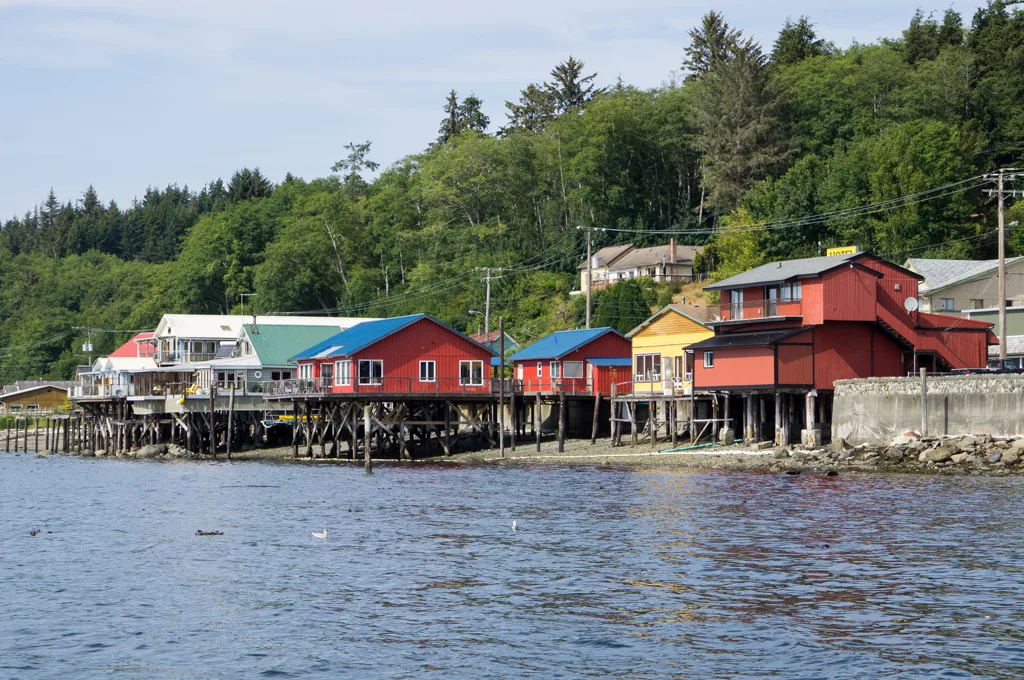
Michael
Wednesday 29th of March 2023
Well documented! Thx for a great read! Looking forward to explore this year!
eleonora
Saturday 20th of August 2022
based on your experience, where is the best place to spot whales or killer whales in late September? north or south of vancouver island? with a whale-watching tour
Taryn Eyton
Sunday 21st of August 2022
Both north and south Vancouver Island have resident killer whales that you can see all year. Between April and October you can also spot other kinds of whales, especially gray whales and humpback whales. South Vancouver Island (Victoria) is a popular place to take whale watching tours since it is easy to get to. But they have less resident whales and are further away from the areas where gray whales and humpback whales normally travel. Northern Vancouver Island has more resident whales and it's easier to spot humpbacks there. You have a good chance of seeing whales from either location though, but if the question is which is "best", I'd say northern Vancouver Island.
Joyce
Monday 23rd of May 2022
Thanks for all the info, Taryn. We are planning our trip to Vancouver Island and found your information so helpful. We are not as energetic as you. Even though we will be traveling with a camper, we are big on off the beaten track places, dirt roads and hikes albeit none like the one to the Lighthouse.
Brookes Laidlaw
Sunday 14th of November 2021
Great info Taryn! Well written and very informative!! We hope to see you back exploring the bounty of Vancouver Island North soon!
Tiffany
Friday 27th of August 2021
Great information, I wish I read this before visiting Cape Scott so I was more prepared for the trek but it was so worth going. Thank you!